There is a Staghound on display in the Army Museum Bandiana in Australia and it is certainly large for an armoured car, looking more like a light tank on wheels.
That comparison is easy to make as the Musee des Blindes has the Staghound displayed right next to a Stuart M3A1:
This Humber MkII is the very old Matchbox plastic kit, so technically 1/76 not 1/72, but it holds up well considering its age. The crew member is another figure from the Plastic Soldier Company.
The Australian Armour and Artillery Museum has a running version of the Humber.
Below is a Daimler MkII armoured car, this one in metal from SHQ, with a crew figure from PSC.
There is one on display at the Tank Museum at Bovington.
Next is a Humber Light Reconnaissance Car MkIII, this one also in metal and from MMS. The crew figure is from Dan Taylor Modelworks.
This is a Dingo, a plastic kit with photo-etched brass detail from S-models. The two crew are from AB Figures.
The Musee des Blindes has a Dingo in the collection.
Ford in Canada made a version of the Dingo which they called the Lynx. It used the same body but a different engine and running gear. There is one in the Canadian War Museum.
The later models of the Stuart light tank the M5A1 (which the British called the Stuart V) saw service in a recce role during this stage of the war in Europe and this one is from the Plastic Soldier Company set.
Below is one on display in the Canadian War Museum in Ottawa.
The Musee des Blindes also has one in their collection:

The tank types in use by the British in NW Europe were dominated by the Sherman, Cromwell and Churchill. The Sherman M4A4 set from Plastic Soldier Company allows you to build either a standard M4A4 with the 75mm gun, or to make a Firefly. Fireflies were normally allocated to one per troop of regular Sherman 75mm or Cromwells. Here's two of the standard M4A4. I've replaced the bow machine guns as those that come with the kits are rather crude looking pipes.
While all Shermans have a certain look about them that makes them immediately identifiable as a 'Sherman' the number of models and variants can be very confusing, not least because many of the differences can be quite subtle. However, once you are aware of the differences they do become quite noticeable. The most common type used by the British was the M4A4, which they called the Sherman V. This housed a different engine to other models which required the rear engine deck to be extended and so the M4A4 was approximately 6" longer. Admittedly that's not something you are really going to notice at this scale, but that and a number of other differences, like the three piece curved transmission housing at the front of the tank help to differentiate the M4A4. The excellent collection at the Canadian War Museum features one.
There is also one at the Imperial War Museum in London.

Here is the Plastic Soldier Company's M4A4 as the Firefly version. I've added hessian camouflage netting to this one and two crew figures from AB.
The example below is from the comprehensive collection at the Tank Museum at Bovington.
The Australian Armour and Artillery Museum also has a Firefly, this one in running order.
Cromwell tanks were normally assigned to the recconaisance units of armoured divisions, however the 7th Armoured Division had these in their armoured regiments as the main battle tank. This one is a quick assembly plastic kit from Armourfast, a sturdy but slightly basic model made for wargaming. I've added camouflage netting, stowage and a crew figure from AB to give it a bit more character (you can find a step by step tutorial on how I made it in
this post).
This Cromwell (complete with camouflage netting) is in the collection at the Tank Museum in Bovington.
A 95mm howitzer was fitted to the Cromwell as a close support weapon. I made up one of these using the Armourfast Cromwell kit and substituting a spare 95mm barrel from the PSC Churchill set.
The Cromwell below is in the Musee des Blindes at Saumur in France and is the Centaur version with the 95mm CS gun rather than the 75mm. The Centaur is basically the Cromwell with a Liberty engine, these were designed to be retrofitted with the Meteor engine when they became available.
Churchill tanks were formed into independent armoured brigades which were allocated out to support infantry as needed. This first one is from the Plastic Soldier Company and is armed with a 75mm gun.
The Canadian War Museum in Ottawa has a Churchill Mk III on display.
The collection at the Musee des Blindes also has a Churchill, although this one is a bit of mystery to me. The turret shape looks like a MkIV or a MkV but the 75mm gun has a mantlet that I have never seen on a Churchill before.
The Plastic Soldier Company Churchills are a bit of a hybrid, probably a mix of several marks, from MkIII to Mark V.


The Imperial War Museum in London has a Churchill MkVIII on display (the easiest way to spot a Mk VIII are the round escape hatches on the side, these were found to have greater strength than the rectangular ones that featured on earlier models).
The Churchill AVRE with a Petard mortar was created specifically for bunker busting for the Normandy campaign. This is the old Matchbox plastic kit.
It's possible to also make one from the Plastic Soldier Company Churchills, as they supply the Petard mortar barrel as part of that set. While the Matchbox kit is still a good one despite its age, the PSC model is much sturdier.
There is one of these in the collection at the Tank Museum at Bovington based on the Mk III version of the Churchill.
The PSC set also include a gun for the Churchill variant with the 95mm howitzer for close infantry support.
Airfix took their old Churchill plastic kit (first released in 1961!) and in 2006 added a trailer and flamethrower to create the Churchill Crocodile. I've taken the original Churchill tank which comes with the set and made a few modifications, mainly to the turret, to make a more accurate Churchill VIII.
My inspiration was the Crocodile on display at the Bovington Tank Museum.
Had I been paying more attention I would have noted the configuration of the tyre tread on the fuel tank and made it correctly when putting the Airfix kit together.
Talking of flamethrowers there is also the Wasp Universal Carrier flamethrower, a Canadian conversion of the MkII carrier. This model is in resin and comes from the Rapid Fire 'Ready-to-roll' range. A distinctive feature of the range is that nearly all the models come with a base attached, not something I particularly like, but it is one of the few models available of the Wasp.
I've seen a couple of Wasps. This one, perhaps unsurprisingly, is in the Canadian War Museum.

The other is in the military museum in Beijing.
Talking of Airfix this is their old Buffalo kit (a relative youngster compared to the Churchill as it was first released in 1965) which I made up about ten years ago as part of a project to see what I could do using my current modelling skills to improve the kits I made in my childhood. I've yet to use it for a game, but it's there just in case.
This is the LVT4 on display at the Musee des Blindes:
The British mounted various versions of the very effective 17 pounder anti-tank gun in a number of different AFVs. The M10 Achilles was the British adaptation of the American tank destroyer. This one is from Armourfast. I've added more detail to the turret interior and a crew of various AB Figures.
The 17 pounder was also mounted on the chassis of the Valentine. In an unusual configuration it was mounted facing the rear of the vehicle, probably ideal for a quick getaway from an ambush position. This kit comes in resin and metal from Early War Miniatures and once again I've used AB figures to make up the crew.
The Australian Armour and Artillery Museum has an Archer in their collection.
There's not much call for on table artillery support in a platoon level game but the Sexton, mounting the 25 pounder, was occasionally called on for close support. This is a resin model that comes as a single piece including a base. I don't normally base my vehicles but removing the base from this one was going to prove quite a challenge and so I decided I could live with it. The camouflage netting was not a later addition it comes as a moulded part of the model itself. The crew are AB Figures.
The Australian Armour and Artillery Museum has one in their collection.
Other forms of armoured transport are in the form of Italeri's Kangaroo plastic kit, which comes in a boxed set of two that can be made up either as a Priest self propelled gun or the Kangaroo. These are made with wargaming in mind, so are fairly simple, but Italeri have done a good job with the level of detail. I've added passengers and crew from a number of different Plastic Soldier Company sets. I made these specifically to use when we played the
Road to Bremen campaign for Chain of Command, although in the end they didn’t see that much action.
M5 halftracks from the Plastic Soldier Company provide another form of armoured transportation for my infantry.
When it comes to anti-tank guns the British relied on two models in the later years of the war. The most powerful being the 17 pounder and this one is in metal from Early War Miniatures with a crew from AB.
Here is one in the Canadian War Museum.
The more common gun to be seen on a Chain of Command table is likely to be the six pounder. This one is from the Plastic Soldier Company and has a crew from AB.
Here's a 6 pounder on display at the Canadian War Museum.
And here is another in the collection in Saumur.
Last but not least, I’ve continued creating themed jump-off-points for various nationalities. I’ve repurposed this AB dispatch rider and motorcycle that I had created originally for a Crossfire company commander base into a British jump-off-point.

























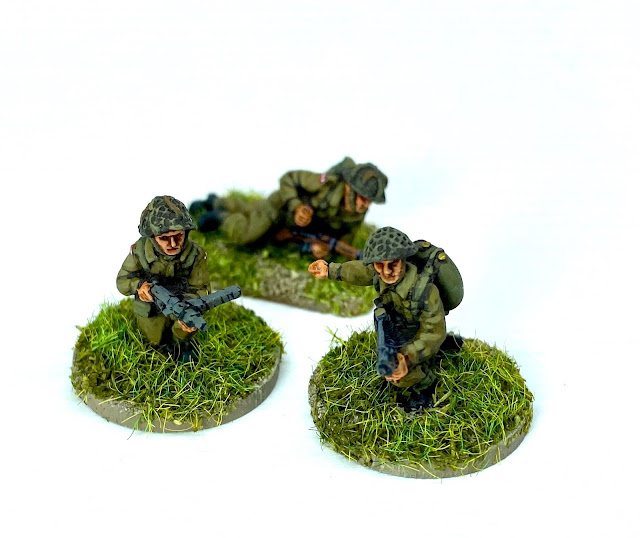











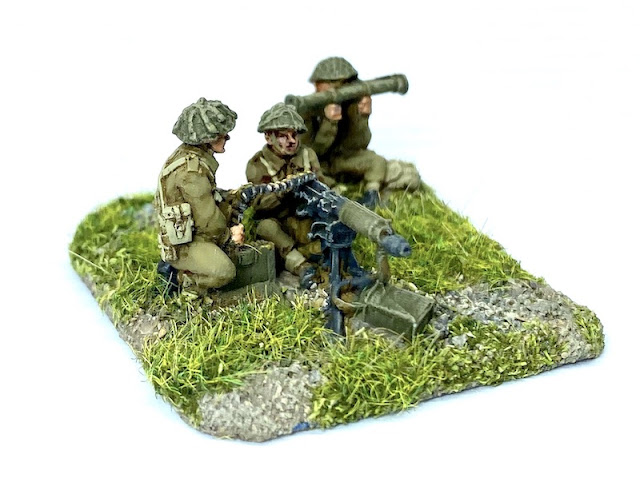



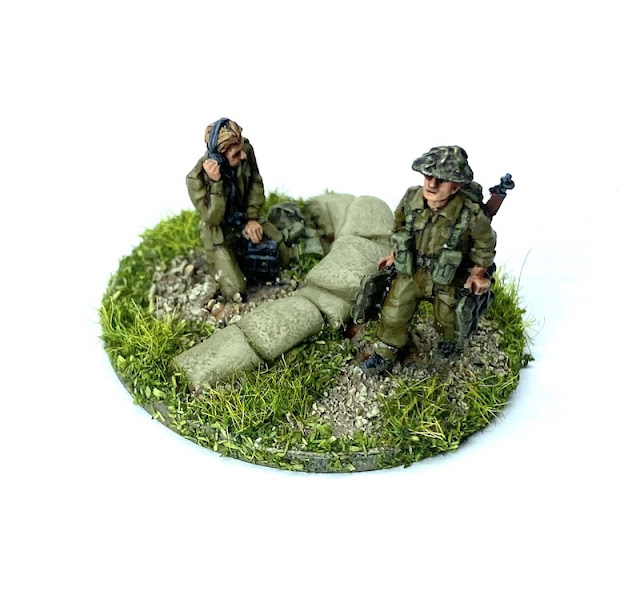




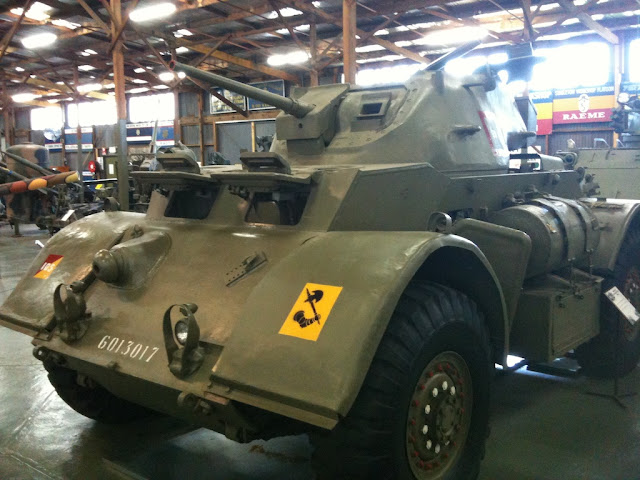

























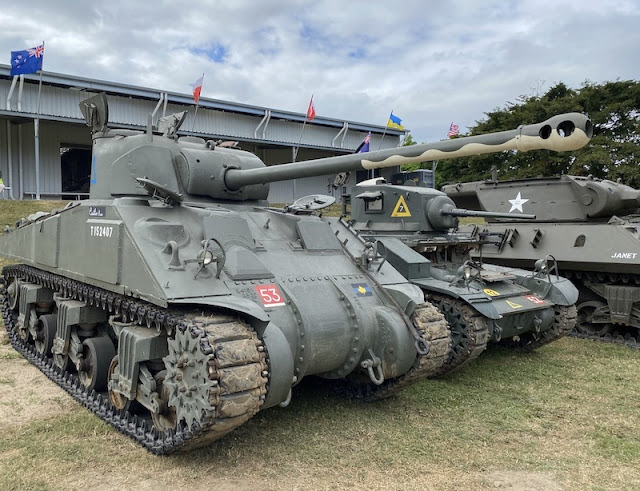



































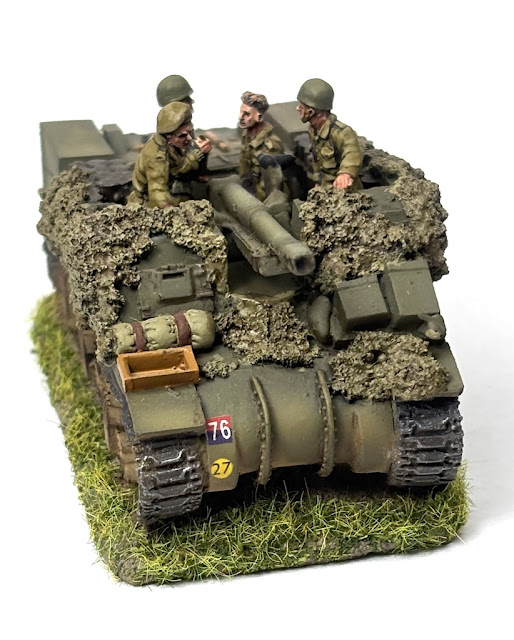





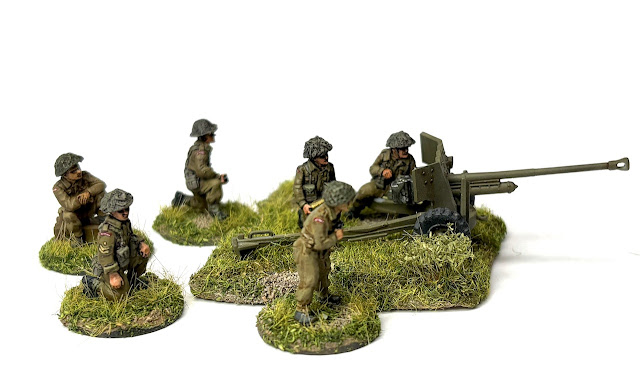




Thanks for once again providing me with inspiration for some long stalled projects.
ReplyDeleteThanks, but I hope I haven’t burdened you with yet another painting project!
DeleteWhat a lovely collection of figures and AFV's...excellent painting and basing!
ReplyDeleteThanks Jim, I’m very happy with the new(ish) basing style, I hunk a more naturalistic look works well, especially for this period.
DeleteDitto a lovely collection and a great retrospective view
ReplyDeleteThanks!
DeleteThey are absolutely beautiful!!!
ReplyDeleteThanks Ray, a good sculpt always helps and those AB figures are lovely.
DeleteA grand pictorial and narrative review of your fine collection.
ReplyDeleteThanks Phil, eventually I’m hoping to do this for all my platoons.
DeleteSpectacular post ! Lovely collection of WW2 British / Commonwealth.
ReplyDeleteThanks John.
DeleteA lovely collection you have. I always preferred 20mm to larger scales, and it's nice to see it making a comeback.
ReplyDeleteThanks, I can never be sure if 20mm ever ‘went away’ or was simply eclipsed by other scales driven by the popularity of FoW (15mm) and Bolt Action (28mm). I think players of Crossfire, Rapid Fire and Battlegroup have always been predominantly 20mm but those rule sets tend to fly under the radar these days.
Delete20mm the proper scale for WW2!
ReplyDelete20mm does have a lot of attraction for the Wargamer and here you show why!
ReplyDeleteAlso, thanks for posting the pictures of the real thing, always great to see how they actually looked.
Lovely collection and great post. Only just getting into BA and COC here (albeit we already play what seems like everything else!) and, if it wasn't for the fact that one of the guys jumped too fast and bought loads of 28mm from Warlord and for the fact that a couple have 28mm armies they rarely use, I would definitely have gone for AB 20mm and 1/72 plastic kits. Bigger than the multi based 15s we use for Battlegroup and O-group but big enough to justify basing singly while still giving more playable table area.
ReplyDeleteAll beautifully done work as per usual for you. As a minor note, I believe the Stuart V is an M5A1 rather than M3A1 Stuart.
ReplyDeleteAh yes, my error, thanks for pointing it out, I've gone back and corrected it.
Delete